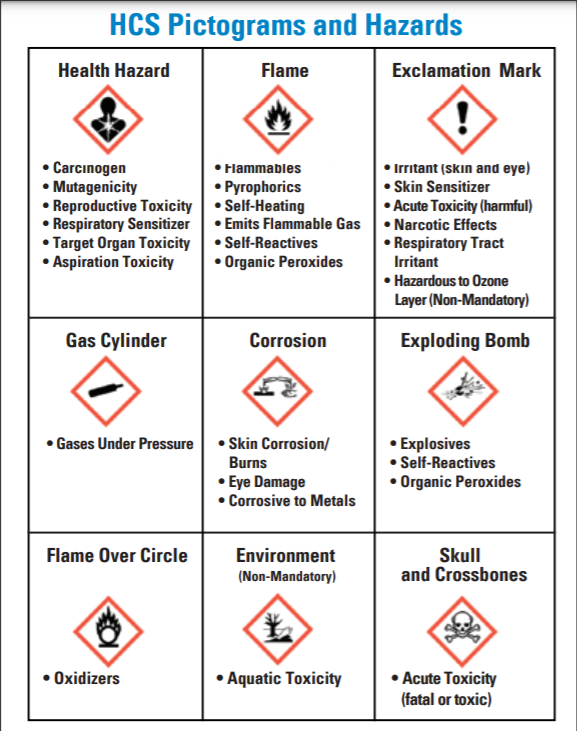Be aware of the quantities!
The CDC proposes a general framework and standard procedure to follow:
- Cleaning with soap and water is sufficient for some surfaces, which reduces the risk of exposure to strong chemicals.
- Most household bleach contains 5%–9% sodium hypochlorite. It is required to use it in this range. For people who want to prepare their own mixtures of bleach solutions, the standards are: 5 tablespoons (1/3 cup) of bleach per gallon of room temperature water OR 4 teaspoons of bleach per quart of room temperature water.
Incidents from different countries were referred to as Case Studies related to the above topic.
One Case study reports a 54-year-old allergic woman in Michigan. She was exposed to chlorine fumes when an excessive amount of bleach was added to a pool in which she was swimming. She received a diagnosis of chemical pneumonitis and was hospitalized for 7 days. Some statistical analysis showed that in New York, during 1983-2007, 31 events were attributed to chlorine gas exposure often resulting from mixing sodium hypochlorite solutions (e.g., household chlorine bleach) with acid. Recommendations included designing containers so that dust clouds are minimized when they are opened, using pictograms and appropriate PPE.
Another Case Study examines the mixing of incompatible chemicals at the MGPI Processing, Inc. facility in Atchison, Kansas in October 2016. The mixture of the two chemicals, sulfuric acid and sodium hypochlorite, produced a cloud containing chlorine and other compounds. The incident occurred during a routine chemical delivery of sulfuric acid from a cargo tank motor vehicle. Over 140 individuals sought medical attention and hospitalization. Following a chemical analysis and examination of factors, the Chemical Safety and Hazard Investigation Board (CSB) includes key lessons and safety measures for preventing similar incidents for facilities receiving chemicals and the companies delivering them.
Facing this important public health concern, several countries and international organizations elaborated and ratified laws and acts to enforce the best practices of use and ensure worldwide safety.
- Federal Hazardous Substances Acts (FHSA): requires precautionary labeling on the immediate container of hazardous household products to help consumers safely store and use those products.
- ILO Chemical Convention concerning Safety in the use of Chemicals at Work (entered into force on 04 Nov 1993): suppliers of hazardous chemicals are required to identify the hazards of their chemicals and prepare safety data sheets and labels. Employers should follow the same steps with the workers.
- The International Health Regulations (IHR) (2005) is a global, legally binding instrument with 194 signatory countries. They provide a major framework to ensure adequate preparedness for and response to public health emergencies caused by all types of hazards, including chemicals.
- The Strategic Approach to International Chemicals Management (SAICM) is a policy framework that promotes international action on chemical hazards to ensure that chemicals are produced and used in ways that minimize adverse impacts on environment and human health.
There aren’t major and specific laws or acts in Lebanon concerning hazardous chemicals and the way of disposing, handling, and using them. But, in April 2006, Lebanon ratified the Chemical convention, 1990 (No. 170) of the ILO, which covers all hazardous chemicals and focuses on chemical risks at the workplace. Also, some articles of the Decree No. 11802 (30 January 2004) specify that employers should provide information to the workers on how to safely use chemical products, and help them understand any danger that may arise from toxic materials and their physical and biological effects.
Misusing chemical products is a worldwide issue, especially in an over-consuming country like Lebanon. Aside from having few laws and acts concerning this problem, many other recommendations to Lebanon can be presented:
- Raise awareness on the proper use of chemical products on social media. Channels can be made to teach about the acceptable quantities of use, the precautions to take, the less harmful materials to use. Publicities on TVs, radio and short documentaries can highlight the importance of not mixing incompatible chemicals in households to prevent exposure or serious health problems.
- Conduct workshops and trainings for the workers about the measures to take when handling hazardous chemicals, especially learning the pictograms, and understanding the message behind them.
- Train housekeepers on how to deal with the chemicals since they are the ones who clean the most in the household.
- Use more eco-friendly natural agents, as PMC suggested, to clean and avoid the harmful effects of strong detergents. The World Health Organization (WHO) also suggests light detergents to reduce health risks.
- The government should adopt new technologies to detect and monitor industrial chemicals and the releases during a reaction in facilities to avoid any health risks from exposure.
Do you know, by now, what you’re holding in your hands?
